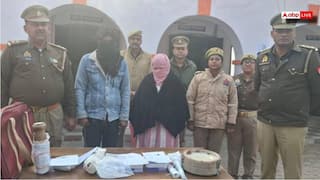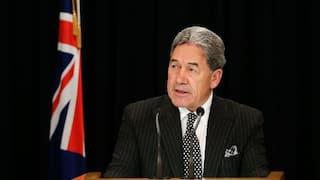Explained: How Will Schools Be Selected Under PM SHRI Scheme? What Will Be The Benefits?
PM SHRI Scheme: The Prime Minister said that PM-SHRI would be a modern, transformative and holistic way of imparting education in schools.

New Delhi: Prime Minister Narendra Modi announced the Pradhan Mantri Schools for Rising India (PM-Shri) scheme on the occasion of Teachers' Day. Under this, 14,500 schools will be developed and upgraded across the country. The Prime Minister said that PM-SHRI would be a modern, transformative and holistic way of imparting education in schools. According to him, through this, special attention will also be given to the latest technology, smart classes, sports and modern infrastructure.
How Will The Scheme Benefit Schools And Students?
More than 18 lakh students of the country will get better school education from more than 14 thousand schools upgraded under the PM-SHRI scheme. For this, the central government has allocated a budget of Rs 18,128 crore. At the same time, a total expenditure of Rs 27,360 crore is going to be incurred on this scheme in 5 years.
"The Union Cabinet has approved the launch of a new scheme for setting up PM-SHRI schools. Over 14,000 schools incl Kendriya Vidyalayas and Navodaya Vidyalayas will be strengthened to emerge as PM-SHRI schools," said Minister of Education, Dharmendra Pradhan during the press conference.
The full spirit of the National Education Policy 2020 will be displayed in PM-SHRI schools and they will also provide mentorship to other schools around them. The prime minister's office said in a statement that these schools would not only aim at qualitative teaching, learning and cognitive development but would also create holistic and well-rounded individuals equipped with key skills of the 21st century.
Also Read: Cabinet Nod To PM-SHRI Schools, Leasing Of Railways' Land For Gati Shakti Scheme: Key Points
What Are The Salient Features Of NEP In School Education?
The NEP envisages a teaching style divided into different stages – basic, elementary, middle and secondary. The foundational years (pre-school and grades I, II) will include sports-based learning. At the elementary level (III-V), light textbooks are to be introduced along with some formal classroom teaching. Subject teachers are to be introduced at the middle level (VI-VIII). The Secondary stage (IX-XII) will be multi-disciplinary in nature comprising Arts and Science or other subjects.
How Will PM-SHRI Schools Be Different From Kendriya Vidyalayas Or Jawahar Navodaya Vidyalayas?
Kendriya Vidyalayas or Jawahar Navodaya Vidyalayas come completely under the Union Ministry of Education. They are fully funded by the central government under central sector schemes. Whereas KVs largely take children of central government employees posted in states and union territories. JNVs were established for the brightest students in the rural parts of the country. In contrast, PM SHRI Schools will be an upgrade of existing schools run by the Centre, States, Union Territories and local bodies. This essentially means that PM Shree schools can either be run by KVs, JNVs, state government schools or even municipal corporations.
Also Read: PM Modi Announces PM-SHRI Yojana For Development Of Schools. What Is It?
Education Loan Information:
Calculate Education Loan EMI






































